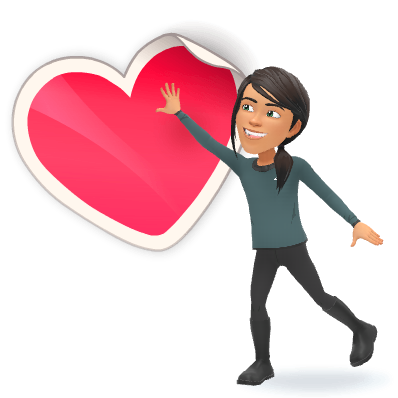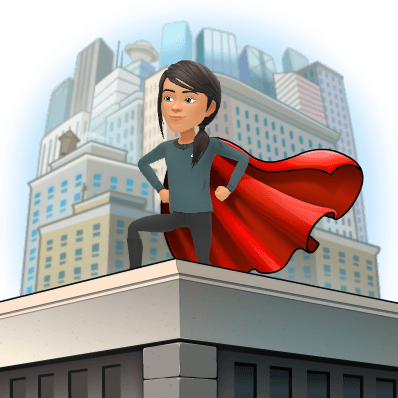This summer, I am checking something off my professional bucket list by working on my principal's endorsement. Even with grad classes and internship hours, this summer is moving at a much slower pace than last summer. Summer 2020 was filled with meetings, committees, and preparing teachers to be ready for the most unpredictable school year of our lives. Despite the desire to never hear the Zoom doorbell again, many aspects of last year lead to positive learning outcomes for students and teachers alike. I have wrestled with a question this summer: how can we leverage those great lessons and learning outcomes to create innovative and powerful educational experiences for our students in fall 2021 and beyond?
We embraced flexibility.
An ever-changing schedule and teaching circumstances forced us all to embrace flexibility. Health and safety regulations were constantly shifting as new information became available. School schedules and instructional plans were drafted, created, revised, and scrapped altogether. In that planning process, teachers identified essential skills and curricular topics that needed to be taught to support student learning. In addition, teachers across disciplines and age levels developed social-emotional learning strategies and other ways to provide students with a sense of community in their respected classrooms. Then teachers and staff had to determine the modality and methods to teach this information. We flew the plane and built it mid-flight; we were flexible. What mattered most was the connections and relationships, and all the rest came second - or some days not at all. Because of flexibility, we learned to reteach, reinvent, and recreate educational experiences that we never thought we'd have to create, all from our couches, spare bedrooms, and basements with our kids, pets, and personal lives swirling about us. And when the modalities changed from full remote to hybrid to full remote again in a week, we exhibited our flexibility and rolled with the metaphorical punches.
While I hope to never see so many shifts in my academic career again, I hope that we are more open-minded to new learning modalities, curriculum shifts, and instructional technology. Frustrating as it was to scrap lesson plans and reimagine every academic experience, we had time to collaborate with others and reflect on what mattered most. We were flexible and then flexible again, and in some ways, we all succeeded with the educational experience we might never have tried if we were not forced to do so.
We used technology in innovative and meaningful ways.
A few of my colleagues and dear friends were tech resistant for a while. When we started using Chromebooks at a rapid rate, some said, "I'm fine with paper." As Google Classroom captivated our content, a few stuck to the shallow end. In March 2020, those barely wadding in the kiddie pool of educational technology had to dive headfirst into uncharted waters. Being in full quarantine, all teachers had to adopt educational tools to deliver content and only had a weekend to prepare. With that challenge thrust upon us, so many teachers rose to the incredible feat of using educational technology to communicate, collaborate, and innovate with their students. Teachers learned Kahoot, Pear Deck, Flipgrid, EdPuzzle, Padlet, and every Google Workspace tool in the toolbox. They mastered online feedback with extensions like Mote and Permanent Clipboard. They even became content creators with Screencastify and WeVideo. Teachers found countless tools and ways to formatively assess and engage students in the learning process even while learning from home.
Some teachers might have stayed shallow with these tools or never tried many of them at all. Trying something new and creating a walkthrough video or recording can be intimidating. Like our students, we judge ourselves and strive for perfection, which can hinder the creative process, but we went all in and surprised ourselves because we had no choice. I am so excited to see what teachers generate and create moving forward. Because we have tried, sometimes failed, but more often than not succeeded with these new tools to innovate our teaching, we now can continue to do so while still enjoying our face-to-face time with students and maybe even writing something on paper every once in a while, too.
We forged personalized learning pathways.
With new educational technology skills and flexibility under our belts, we have the tools to implement blended learning and personalization into the classroom more than ever. Last year, teachers had to retool and rethink how they taught lessons. Many created videos and resources that can supplement and personalize student learning. The tools we spent hours designing and developing do not have to be wasted because we are back to in-person learning.
We learned that some students learn better in a flipped classroom environment or with resources to rewatch or pause as needed during the pandemic. As such, I am hopeful that moving forward, we've created multiple ways for students to acquire knowledge and also various ways in which students can demonstrate mastery. My district adopted a new LMS platform that if we had not been in the pandemic, we would not have shifted our curriculum and assessments nearly as quickly. Again, now that we have created resources out of necessity, I hope that those resources will continue to provide multiple pathways on which students can navigate and learn.
We encouraged student self-efficacy.
Beyond school, the pandemic was difficult for our children. Being isolated, in a place of uncertainty, and coping with a myriad of challenges at home, countless students faced situations that increased anxiety and fear. While they had to cope with a great deal, they also learned that they could take charge of their learning. Students had to innovate and create. They had to think in ways they might never have to before. While some students disengaged, teachers also found that some students soared with digital and remote learning. While we can agree that in-person learning is what works best for most students at the K-12 level, some students found great success in a digital or remote environment. Incorporating some of those strategies into our classrooms can help increase student learning independence and efficacy. Students CAN be the drivers of their learning, and we witnessed this firsthand during the pandemic. Encouraging students to take ownership of their learning will help them pursue education and careers beyond the K-12 hallways.

We extended grace.
Finally, one takeaway I hope we continue to remember is giving grace to our students, our colleagues, and most importantly, ourselves. This past year, there were days when the internet failed us, when lessons didn't work, and when students were unable to show up for a myriad of reasons. Collectively, we attempted to assume the best in all people and all situations. We accepted failures and shortcomings, and we provided support to our colleagues when we needed to do so. Let us continue to see the best, believe the best, and lift up others when needed. When we remember and truly honor the word grace, our schools, and our world can begin to heal from 2020.
As a future educational leader, I hope to leverage our most challenging experiences for the positive. Every situation is an opportunity to learn. This last year was perhaps the most challenging collective experience we all faced together. Taking the best moments and outcomes from this past year, I believe we can create a much more innovative and positive educational experience for our students moving forward.


.jpeg)












